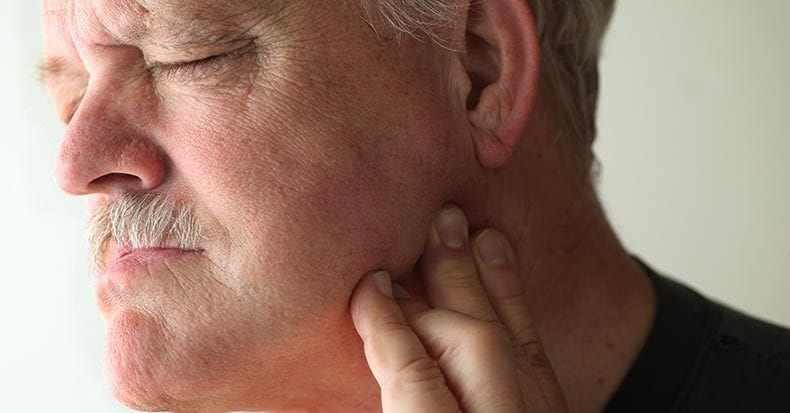
Pain in the jaw joint, temporomandibular joint dysfunction (TMD), is a common complaint for many people. In 2009, a publication reported that TMD affects between 20-30% of the adult population. Typically occurs between 20 and 40 years old and is more common in females than males. TMD is the second most frequent cause of orofacial pain after dental/toothache pain. Acute TMD and chronic TMD are NOT life-threatening. Although they can significantly alter one’s quality of life, some can be quite disabling.
TMD Symptoms
TMD can also be the sole cause of headaches for some patients. More commonly, TMD associates with multiple symptoms. Most often, there’s pain resulting from jaw movements such as yawning, chewing, and talking. Pinning a cause on this condition can be difficult and treatment approaches can vary widely. Common treatments include the use of bite or occlusal splints, painkillers and/or anti-inflammatory drugs, and psychosocial interventions such as cognitive behavioral therapy.
Types of TMD
Most studies and guidelines suggest that a treatment approach that can’t be reversed should NOT be considered. It should only be considered if more conservative approaches are tried first. TMD is known as a functional pain syndrome, a psychogenic disorder, and a centrally mediated condition (fibromyalgia). These combinations are quite prevalent, which are challenging to determine a firm diagnosis or cause. Whiplash, can cause TMD, which is “post-traumatic TMD”. “Idiopathic TMD” is used when a known cause can be identified. The American Academy of Orofacial Pain divides TMD into two possible categories muscle and joint. A combination of the two is quite common. Others add “disk displacement” as a category due to the fact that a small disk makes up part of the anatomy of the TMJ.
Treatment
Treatments addressing TMD include splints, medications, physical therapy, chiropractic, osteopathic, clinical psychology, rheumatology, dentistry, etc. Dentists commonly prescribe a mouth guard to address grinding the teeth, which can be very helpful, especially at night while sleeping. In a recent study, the combination of soft tissue massage over the masseter and temporalis AND the use of an occlusal splint resulted in more pain and symptom relief compared with using either approach alone. There are several articles regarding the use of chiropractic treatment with TMD, especially before invasive procedures. Studies show that techniques including spinal manipulation and/or mobilization to the upper cervical region are very effective as are those that address the muscle imbalances in the TMJ, neck, and upper torso region.
We know you have a choice in whom you consider for your healthcare provision and we sincerely appreciate your trust in choosing our service for those needs. If you, a friend, or a family member require care for neck pain or headaches, visit Dr. Woodward today!


